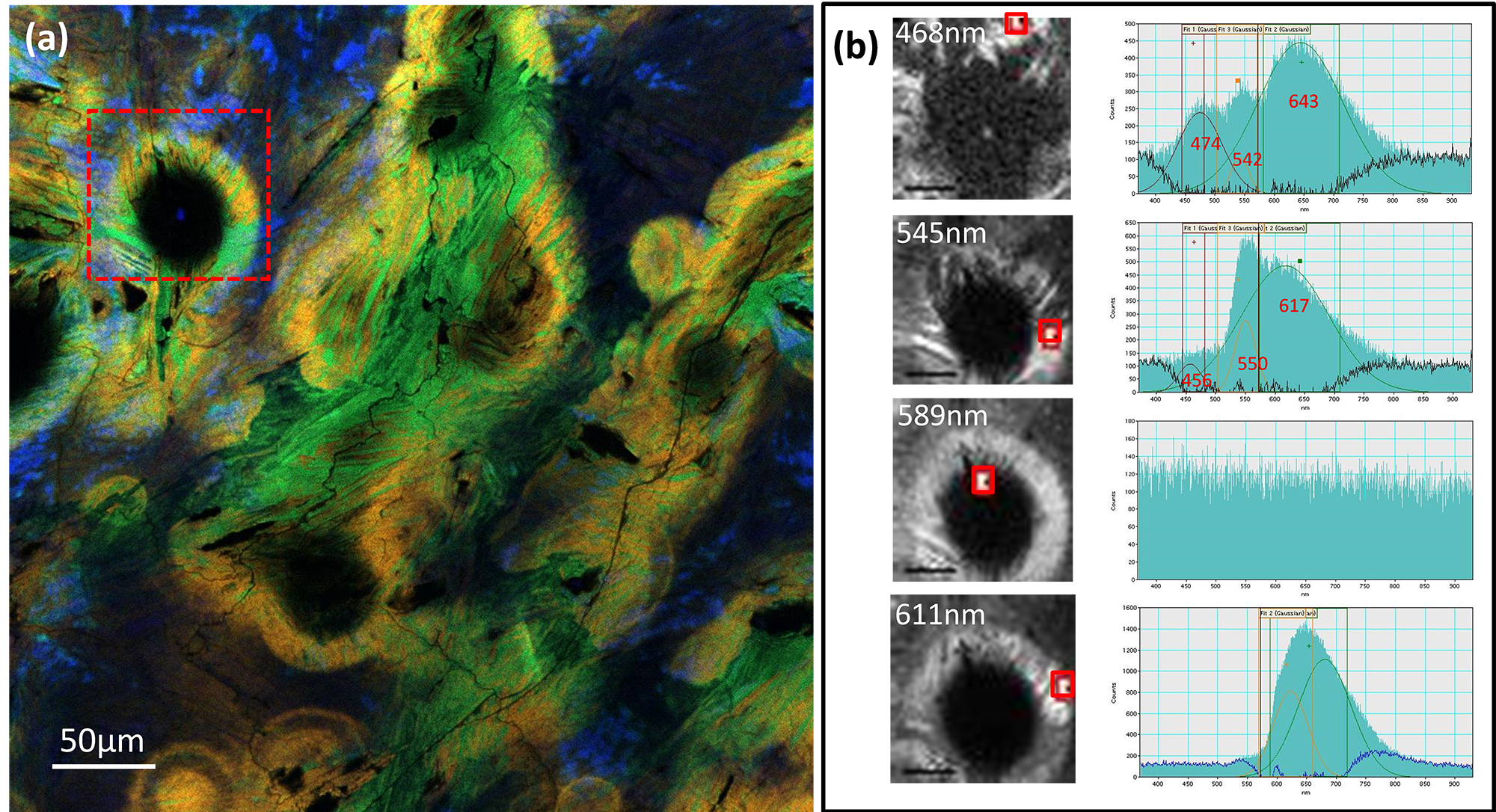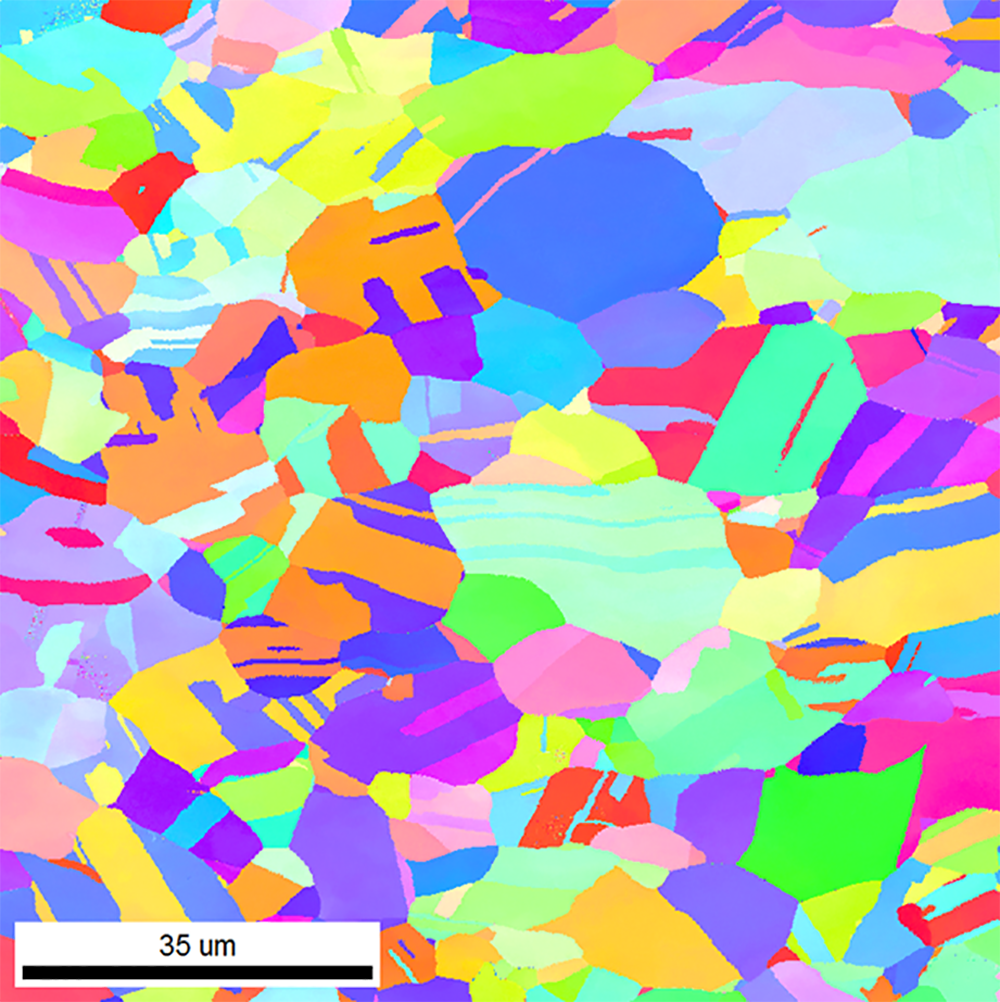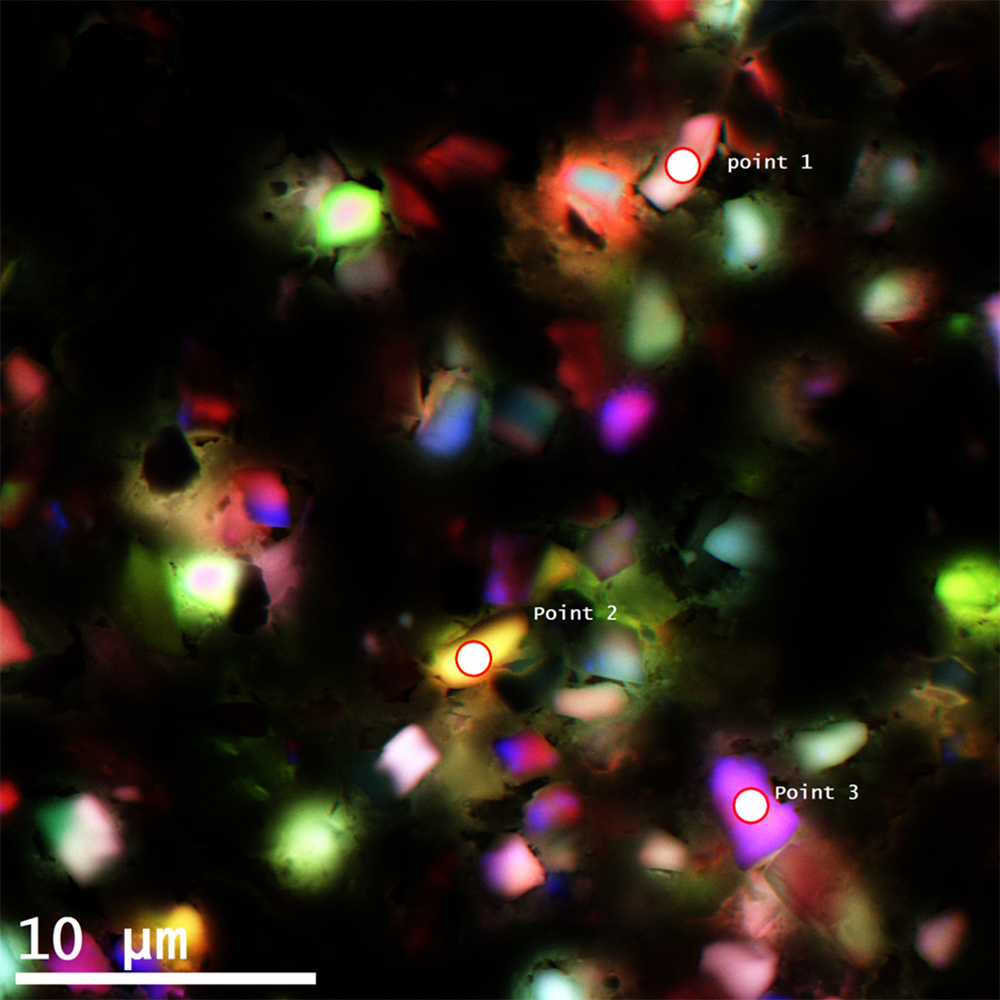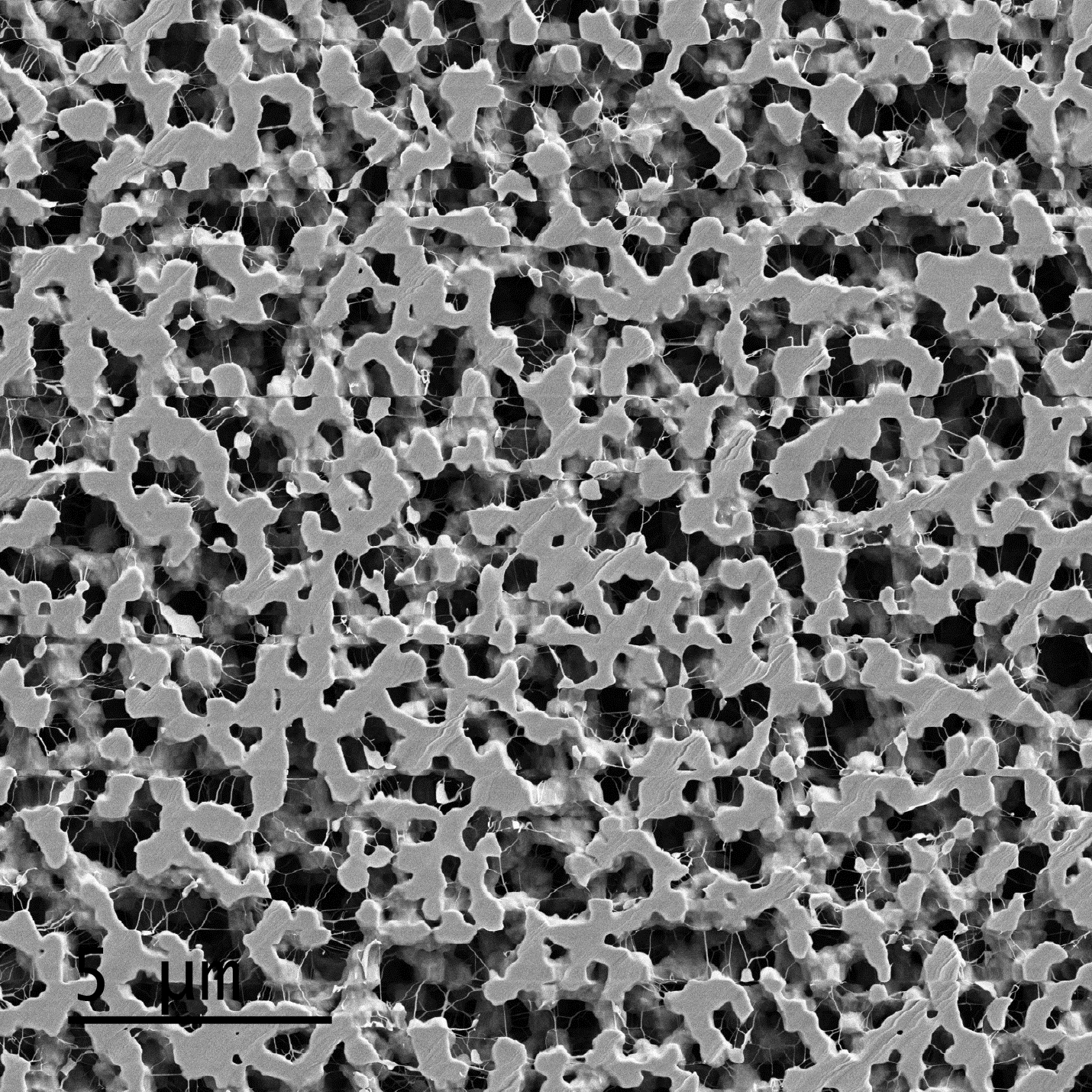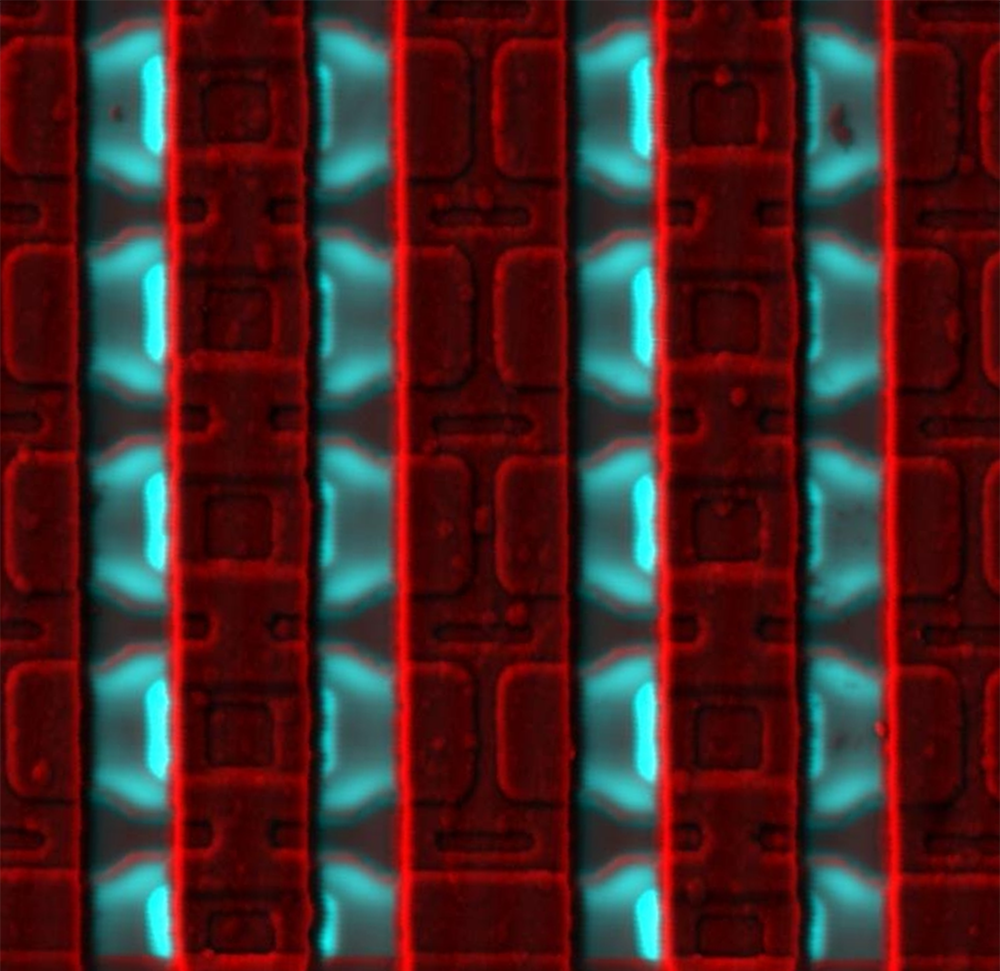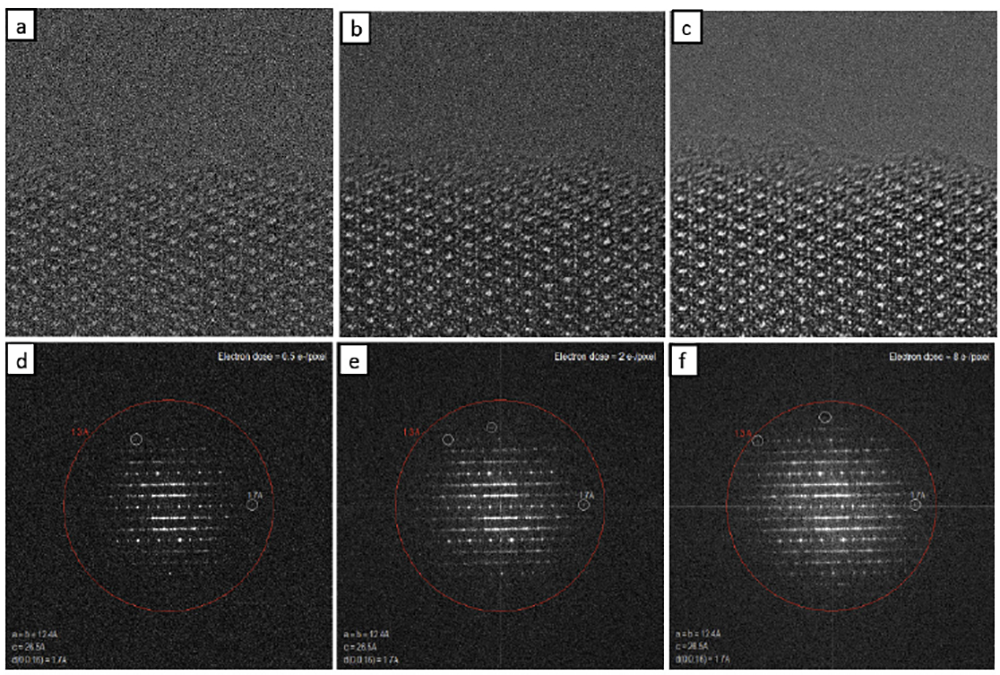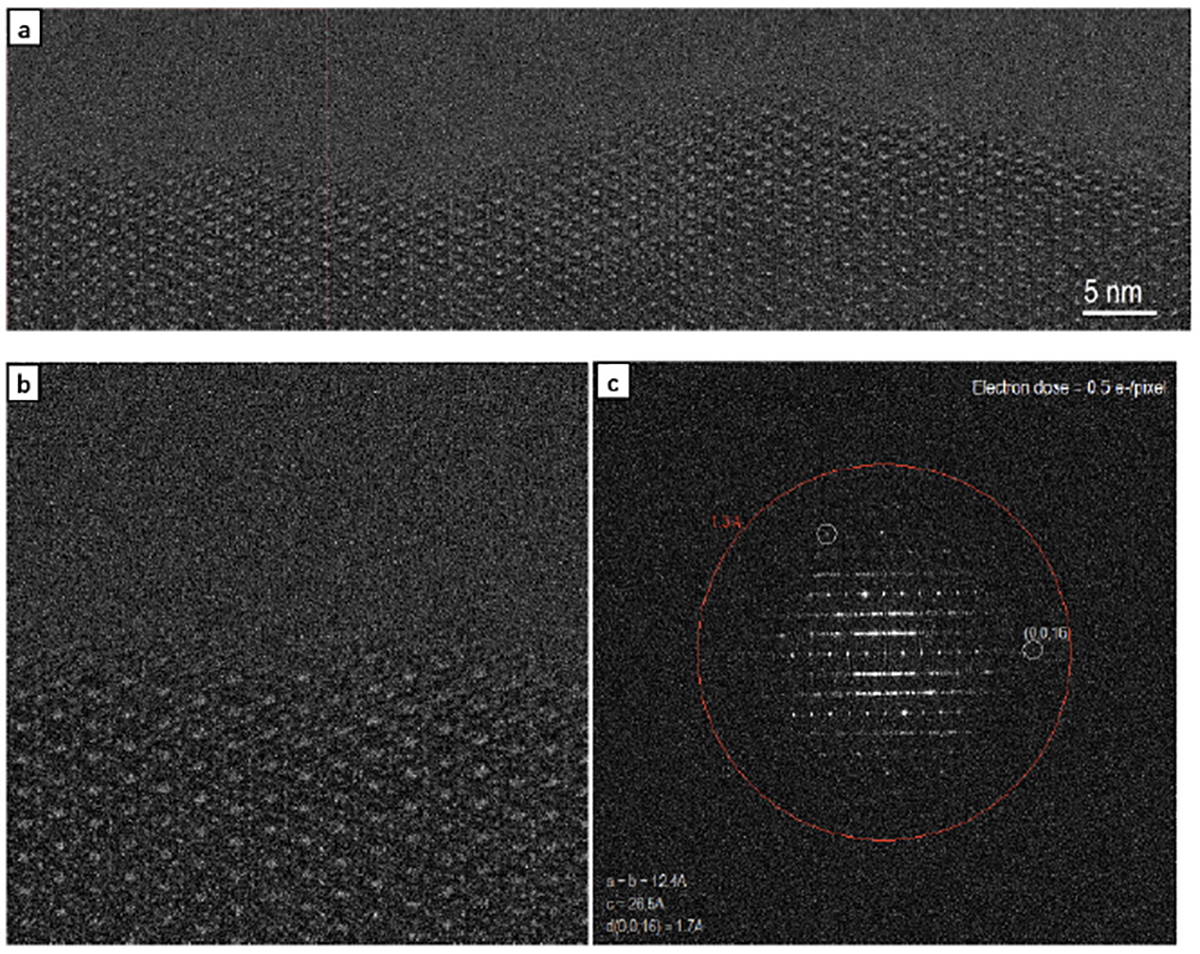Cathodoluminescence spectrum imaging of polycrystalline diamond
Data courtesy of Dr. E. Vicenzi, Smithsonian Institute
(a) Composite cathodoluminescence image of polycrystalline diamond created using red, green, and blue spectrally filtered cathodoluminescence images. Radioactive fluid ingress along grain boundaries leads to radiation halo effects being observed (yellow).
EBSD inverse pole figure map of copper sample
Data courtesy of Evans Analytical Group, Sunnyvale, CA
Through silicon via
Data courtesy of the Fraunhofer Institute, Dresden, Germany (© 2013 Fraunhofer IZM, Dept. HDI&WLP/ASSID).
Backscattered electron image of 2.5 interposer structure prepared with Ilion II system.
Cathodoluminescence image of paint pigment
Data courtesy of Prof. Nicholas Leventis, Chemistry Department, Missouri University of Science and Technology
Cathodoluminescence image of paint pigment sample prepared with Ilion II and imaged with MonoCL4™ system.
Polymer aerogel
Electrical activity of grain boundaries in polycrystalline silicon solar cells
R. Johnson
A quantified EBIC map of a polycrystalline silicon solar cell. Several grain boundary segments are revealed to be electrically active (high recombination rate) and appear dark in the EBIC map (indicated by red arrows) while some appear to be electrically inactive (indicated by green arrow). Electrically active defects reduce the overall efficiency of the solar cell.
Electrical activity of grain boundaries in CdTe solar cell
Data courtesy of Dr. J. Poplawsky, Oak Ridge National Laboratory
(a) Quantitative EBIC contrast map from the cross section of a CdTe/CdS solar cell after CdCl2 and Cu treatment; the intensity scale shows the EBIC contrast number (EBIC current normalized by the electron beam current).
Identify the position of p-n junction in a device
Overlay of the secondary electron (red) and EBIC (blue) images from a GaAs amplifier. The EBIC signal reveals the position of the p-n junction and allows quantitative analysis of the built-in electric field.
Zeolite beta low dose image series
Sample courtesy of Prof. D.L. Zhang at Jilin University, China.
(a) – (c) Zeolite beta electron dose series of 0.5, 2, and 8 e-/pixel; (d) – (f) corresponding FFT images. As dose increases image quality improves and more reflections can be seen in the FFT image.
Zeolite beta low dose images
Sample courtesy of Prof. D.L. Zhang at Jilin University, China.
(a) A single sub-image frame (0.125 s exposure) of zeolite beta along [100] zone axis. Electron dose for this image is 0.5 e
-/pixel or 11 e
-/A
2; (b) Enlarged area of the outlined in (a); (c) FFT image of (b). The d-spacing of (0, 0, 16) is 1.7 A.
Pages
